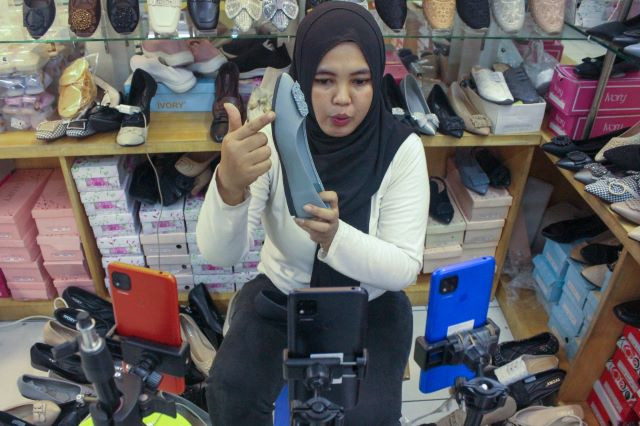Financing still troubles small businesses
Change Size
 Manufacturing is a priority economic sector for Indonesia to promote inclusive growth. (Shutterstock/-)
Manufacturing is a priority economic sector for Indonesia to promote inclusive growth. (Shutterstock/-)
M
anufacturing is a priority economic sector for Indonesia to promote inclusive growth. According to the Central Statistics Agency (BPS), there are more than 3.6 million manufacturing units in Indonesia that can be categorized as micro and small enterprises.
These small businesses are an important source of employment and contribute significantly to the national output.
However, small enterprises often find it difficult to access finance from banks and other formal financial institutions.
Many of them are unable to provide collateral to secure loans, procedures are too complex for them, or the administrative cost of serving them is too high for banks to consider them as a profitable market.
The 2015 BPS survey of manufacturing micro and small enterprises confirms that credit flowing to small enterprises is fairly limited. For example, an overwhelming number of small enterprises (81.4 percent) use their own capital for investing. Among those who borrow, only 38 percent have bank loans. Overall, close to 39 percent of micro and small enterprises consider access to finance a major constraint.
As the figures suggest, penetration of formal credit to small enterprises in the manufacturing sector is fairly low. While outreach of financial services appears to be low, it is important to ask whether small businesses are indeed willing to borrow? In other words, what is the real demand for credit among small enterprises? The answer to this question is not necessarily simple.
The same BPS survey shows that around 51 percent of small manufacturers do not want take a loan from a bank. A lack of collateral, high interest rates and complex procedures were cited as key reasons for not borrowing from banks.
Micro credit program (KUR), the partial loan guarantee of the government, offers credit at more attractive interest rates for small enterprises, and up to a certain threshold of funds, collateral is not required.
Although close to 37 percent of small manufacturing enterprises that have a loan re-borrow under the KUR scheme, the overall proportion of manufacturing enterprises accessing KUR financing is less than 3 percent.
A large proportion of KUR loans is for retail. That seems to the case for bank credit in general. Retail lending for trade and consumption dominates the portfolio for all types of banks, whether they are conventional banks, rural banks (BPRs) or even regional development banks (BPDs) that have more of a development mandate.
Some may argue that the preponderance of consumption loans mirrors the state of the economy, which is driven by domestic consumption. Weak demand for loans in manufacturing would mean that financial institutions could simply wait for demand to increase.
However, a counterargument to a minimalistic role of financial institutions is to see if the banking industry can play a more catalytic role in economic development.
Are there ways that credit can be channeled to small businesses so that the financial institutions can tap the market of small enterprises through innovative models to deliver services?
In the recent past, the policy response has focused on borrowing rates for small businesses. The cost of borrowing does matter for small businesses and, arguably, more so for enterprises engaged in manufacturing, which, unlike trade or services, tends to have a longer turnover period. A below-market rate can potentially lead to moral hazard, attracting businesses that are not necessarily interested in investing, but want to benefit from financial arbitrage.
Here it is important to add that the presence of a large number of small enterprises does not necessarily indicate a high level of entrepreneurship. Some studies have shown that “necessity entrepreneurs” are less inclined to invest and actively seek growth opportunities. These include people who are not able to find wage employment and are often “forced” to start their own businesses. The challenge, therefore, is to find growth-oriented small businesses that can benefit from various credit schemes and deliver greater value.
In light of this, public institutions and other development agencies can play an important role in addressing information asymmetries and providing technical assistance.
A possible area is to help in understanding real demand for the type of financial services needed by small-scale manufacturers with high growth potential and to assist financial institutions in designing appropriate loan products that match the needs of a large and heterogeneous population of small manufacturing enterprises in Indonesia.
---------------
We are looking for information, opinions, and in-depth analysis from experts or scholars in a variety of fields. We choose articles based on facts or opinions about general news, as well as quality analysis and commentary about Indonesia or international events. Send your piece to community@jakpost.com. For more information click here.









